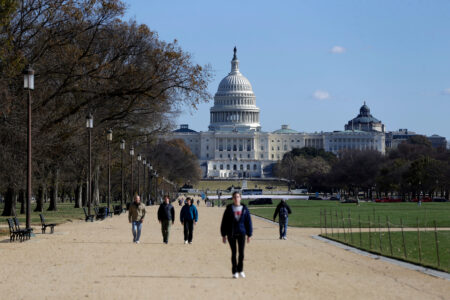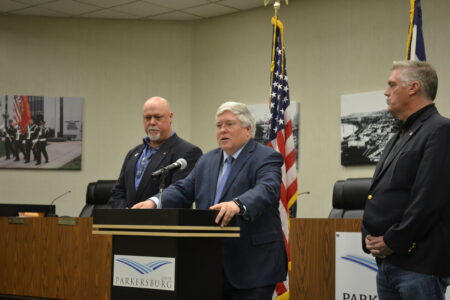Reopening Government Won’t Happen Overnight

Tourists walk on the National Mall near the U.S. Capitol, Thursday, Nov. 13, 2025, in Washington. (AP Photo/Rahmat Gul)
NEW YORK (AP) — The longest government shutdown in U.S. history is over — on paper, at least. But the American public isn’t done with it yet: Getting everything back up and running doesn’t happen all at once.
The disruption of the closure, clocking in at 43 days, varied in its impact. Some people, like unpaid federal workers, were immediately and directly affected. Others included recipients of federal funding through programs like Head Start and food aid through the Supplemental Nutrition Assistance Program.
As the shutdown progressed, effects rippled. Delays and flight cancellations started racking up for passengers as the Federal Aviation Administration ordered airlines to cut back on flights because of air traffic controller shortages. There were closures at Smithsonian museum sites and the National Zoo (although the animals still got fed).
That’s a lot of programs, agencies and systems. Reclaiming “normal” won’t be instantaneous. Here’s a guide to what reopening looks like:
Federal workers
WHAT HAPPENED: About 1.25 million federal workers haven’t been paid since Oct. 1, missing about $16 billion in wages, according to official estimates. The workers were either furloughed or worked without pay in agencies across the federal government. Many struggled to make ends meet during that time, and the regional economy around Washington, D.C., took a hit.
WHAT NOW: The Office of Personnel Management, which manages the civil service, posted on X that federal workers were expected to be back Thursday, saying that “employees are expected to begin the workday on time. Normal operating procedures are in effect.” The pay owed to the workers will come in by Nov. 19. The money will go out in four separate tranches, depending on the agency, according to a senior administration official.
Help with heat
WHAT HAPPENED: The shutdown coincided with the arrival of colder temperatures, and funding for the $4.1 billion Low-Income Home Energy Assistance Program was halted, prompting some states to delay payments for heating bills.
WHAT NOW: A U.S. Department of Health and Human Services spokesperson said Thursday that an agency within HHS will “work swiftly to administer annual awards,” but no timeline was given. Mark Wolfe, executive director of the National Energy Assistance Directors Association, said it could take until mid-December or longer. Wolfe said recipients should still submit applications and tell utility companies they’re waiting for the funds. It’s trickier for people who rely on oil and propane because typically there are no protections. Recipients should check with their state; Vermont backfilled funding and Connecticut has pledged to cover the cost.
Flight disruptions
WHAT HAPPENED: The shutdown caused significant disruptions in aviation, with more and more unpaid air traffic controllers missing work as they dealt with the financial pressures and some of them picked up side jobs. Those staff shortages, combined with some troubling safety data, prompted the government to order airlines to cut some of their flights over the past week to relieve pressure on the system.
WHAT NOW: Those cuts aren’t increasing right now, but the Federal Aviation Administration won’t lift the order until safety metrics improve. Airlines say they expect to resume normal operations quickly after that. Transportation Secretary Sean Duffy has said that controllers and other FAA employees should receive 70% of their back pay within 24-48 hours of the end of the shutdown, with the rest to come.
Taxes
WHAT HAPPENED: The Internal Revenue Service had closed walk-in assistance centers.
WHAT NOW: The centers are being reopened. The agency said all tax deadlines remain in effect but a backlog of paper correspondence developed during the shutdown, so responses will be delayed. Social Security recipients continued receiving payments throughout the shutdown. Local offices also remained open, though they had temporarily suspended a few services, including replacing Medicare cards and updating earnings records.
Education
WHAT HAPPENED: The Education Department laid off 466 Education Department staffers in the cross-government firings meant to pressure Democratic lawmakers over the shutdown. Those layoffs had been halted by a federal judge. The department furloughed 2,117 employees at the start of the shutdown, but some were brought back for essential work. New grants were also put on hold during the shutdown. Most school districts received the bulk of their federal funding over the summer, but some grants have been delayed.
WHAT NOW: The department said Thursday it had brought back all furloughed staff members or those dismissed in the Trump administration’s mass firings. Recipients of Impact Aid, which boosts the budgets of districts with large amounts of federal land that can’t be taxed for local schools, were waiting to learn when their payments would be processed.





